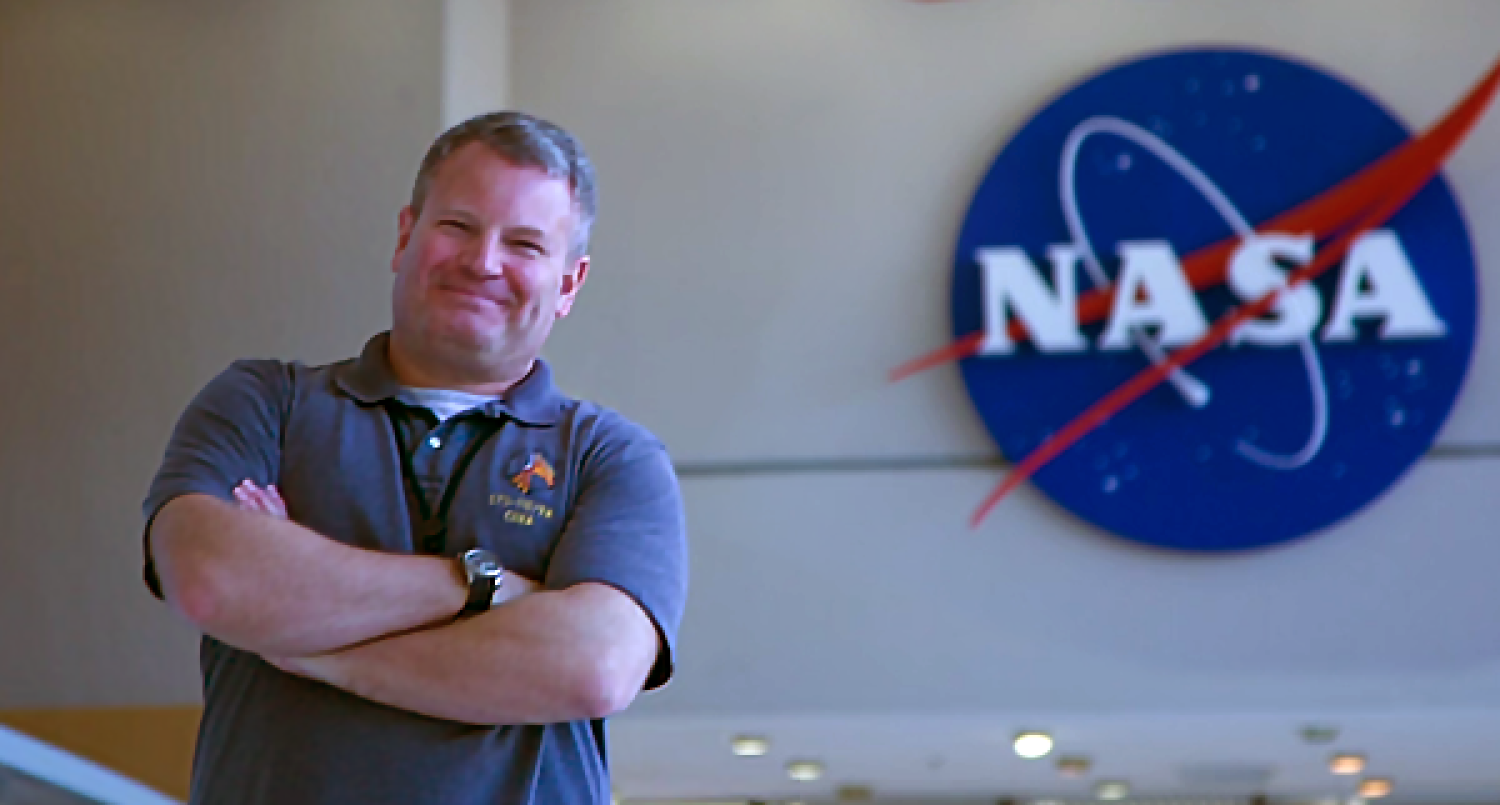Alumnus with Three Master's Degrees and a PhD is Still Learning

Blair Thompson spends a lot of time thinking about satellite flight trajectories and navigation. It is his job, after all, but it's also a personal drive. You don't earn three master’s degrees and a PhD by accident, well, one of them was sort of by accident, but more on that later.
As an engineer and scientist at aerospace and defense contractors, Thompson has worked on systems that lead vehicles to the International Space Station, will soon guide travel to the moon, and are a part of satellites orbiting overhead.
He's an expert on guidance, navigation, and controls of autonomous and manned spacecraft. He's developed software for numerous systems, including a rendezvous algorithm now used on all of SpaceX's Dragon ISS resupply missions.
"The algorithm is to get Dragon from one orbit to another without crashing into other satellites or the station," Thompson says. "That was a really cool project. I got to be creative and use my imagination to solve a problem to help out the astronauts."
How Many Degrees?
He's a smart guy, with two of his degrees from CU Boulder. Thompson earned both a master's and PhD in Aerospace Engineering Sciences here. His other master's degrees are in Electrical Engineering and Space Operations.
So how does someone find themselves with three master's degrees?
"I didn't plan it out that way. I just kept enrolling in classes and I eventually realized I had enough credits for another master's degree,” he says.
Thompson pursued his education not to advance his career, but out of a desire to learn -- a "personal challenge," as he calls it.
"My education has given me a lot of tools to work in aerospace," he says.
Teaching Others
Having so many degrees, it's not surprising Thompson has found a way to impart his knowledge on others. As an officer in the Air Force Reserve, for the past decade he has served as Vice Commandant (Dean) at the Reserve National Security Space Institute at Peterson Air Force Base in Colorado Springs. He has taught aerospace classes to hundreds of service members and civilians.
His teaching, however, is only a part time job. He has a full-time position as a senior scientist at Applied Defense Solutions in Colorado Springs. It's a job he only recently started. For the past 12 years, his primary work was in Houston as a contractor for NASA. For Thompson, the 950-mile gap between his two jobs was only a minor inconvenience.
"I would travel back-and-forth from Houston to Colorado once a month to do both," he says.
Thompson's wife, Kirsten, who he met while at CU Boulder -- she's an aerospace engineer as well -- was a Flight Controller at NASA in Houston; it was the original reason they moved there.
Rocky Mountain Skies
"I liked Houston, don't get me wrong, but we missed Colorado, to be honest," he says.
With the end of the Shuttle program, Kirsten decided to become a stay-at-home mom, and the call of the mountains grew louder.
In April, Blair started at ADS, and the Thompsons returned to Colorado full time. He's involved in several orbital mechanics projects, including the upcoming CYGNSS eight satellite constellation, which will study hurricanes, and a cube sat project called Skyfire, which will be a secondary payload on the first Orion mission to orbit the Moon.
"I love space. I love the extremes. The heat, the cold, the levels of radiation, and being able to have instruments and equipment that can work in that environment," he says.
Even with all of his education, Thompson is still constantly learning, reading books and journal articles on aerospace, to stay current and find out about new developments. It's safe to say space is on his mind, a lot.
"I think about it all the time."

